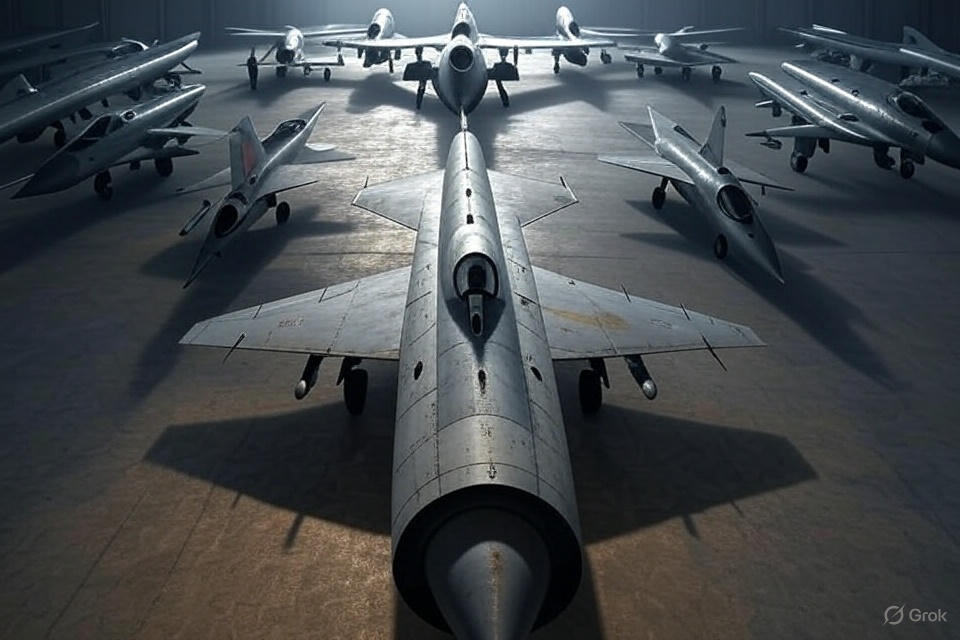Can you imagine a fighter jet soaring through the skies for over six decades, only to be called a “flying coffin” in its final years? That’s the story of the MiG-21, a legendary aircraft that has been the heart of the Indian Air Force since the 1960s. Once a symbol of strength and speed, these jets have now been retired due to a troubling history of accidents. On July 22, 2025, the Indian government announced that the last MiG-21 squadron, based at Nal Air Base in Rajasthan, will fly no more by September, marking the end of an era. This decision, driven by safety concerns and the need for modern technology, opens a new chapter for India’s air defence. Let’s explore why this move matters and what it means for the future.
The MiG-21 first roared into the Indian Air Force in 1963, a sleek, supersonic jet from the Soviet Union that changed the game. Back then, it was a marvel, capable of flying faster than sound and outmatching many rivals. Over the years, India operated over 870 MiG-21s, with many built locally by Hindustan Aeronautics Limited in Bangalore. These jets played a starring role in wars, including the 1965 and 1971 conflicts with Pakistan, and even shone in the 1999 Kargil War. In 2019, Wing Commander Abhinandan Varthaman piloted a MiG-21 Bison to shoot down a Pakistani F-16, proving its grit. But as the years passed, the MiG-21’s shine faded. The world moved on to advanced fighters, and these aging jets struggled to keep up, their single-engine design and outdated systems becoming a liability.

The MiG-21’s nickname, “flying coffin,” tells a darker story. Over 60 years, more than 400 of the 870 MiG-21s crashed, claiming the lives of around 200 pilots and 60 civilians. Recent incidents, like the July 2022 crash in Rajasthan that killed two pilots and the May 2023 crash that took three civilian lives, fueled public outcry. Why were these jets still flying? The answer lies in numbers. The Indian Air Force needs 42 fighter squadrons to guard its skies, but it currently has only 29. Delays in India’s homegrown Tejas program and slow procurement of new jets like the Rafale forced the Air Force to rely on the MiG-21 longer than planned. Mechanical issues, outdated ejection systems, and the risks of a single-engine design made every flight a gamble, especially for training missions where most crashes occurred.
The retirement of the MiG-21 is a bold step toward safer skies and a stronger Air Force. The last squadron, the No. 4 “Panthers” at Nal Air Base, will hold a farewell ceremony on September 19, 2025, with flypasts and displays honoring the jet’s legacy. Replacing the MiG-21 are modern fighters like the Tejas Mk-1A, a homegrown jet with advanced radar and weapons, and the French Rafale, known for its versatility. The Air Force has ordered 83 Tejas Mk-1A jets, with 97 more approved, though deliveries won’t start until late 2025. This transition, while overdue, shows India’s commitment to building a future-ready air force. The Tejas, designed and built in India, also marks a leap toward self-reliance in defence, a goal that’s been decades in the making.
This isn’t just about retiring old jets; it’s about valuing lives and embracing progress. The MiG-21 trained generations of pilots and defended India’s skies through wars and tense times. But its time has passed. As one retired Air Marshal said, “No other fighter has served as long or shaped our pilots like the MiG-21. Its departure is bittersweet.” The farewell ceremony will be a moment to reflect on its triumphs and tragedies, while looking forward to a safer, stronger Air Force. For India, retiring the MiG-21 means closing a chapter filled with pride but also pain, and stepping confidently into a future where the skies are guarded by cutting-edge technology and a renewed focus on safety.











